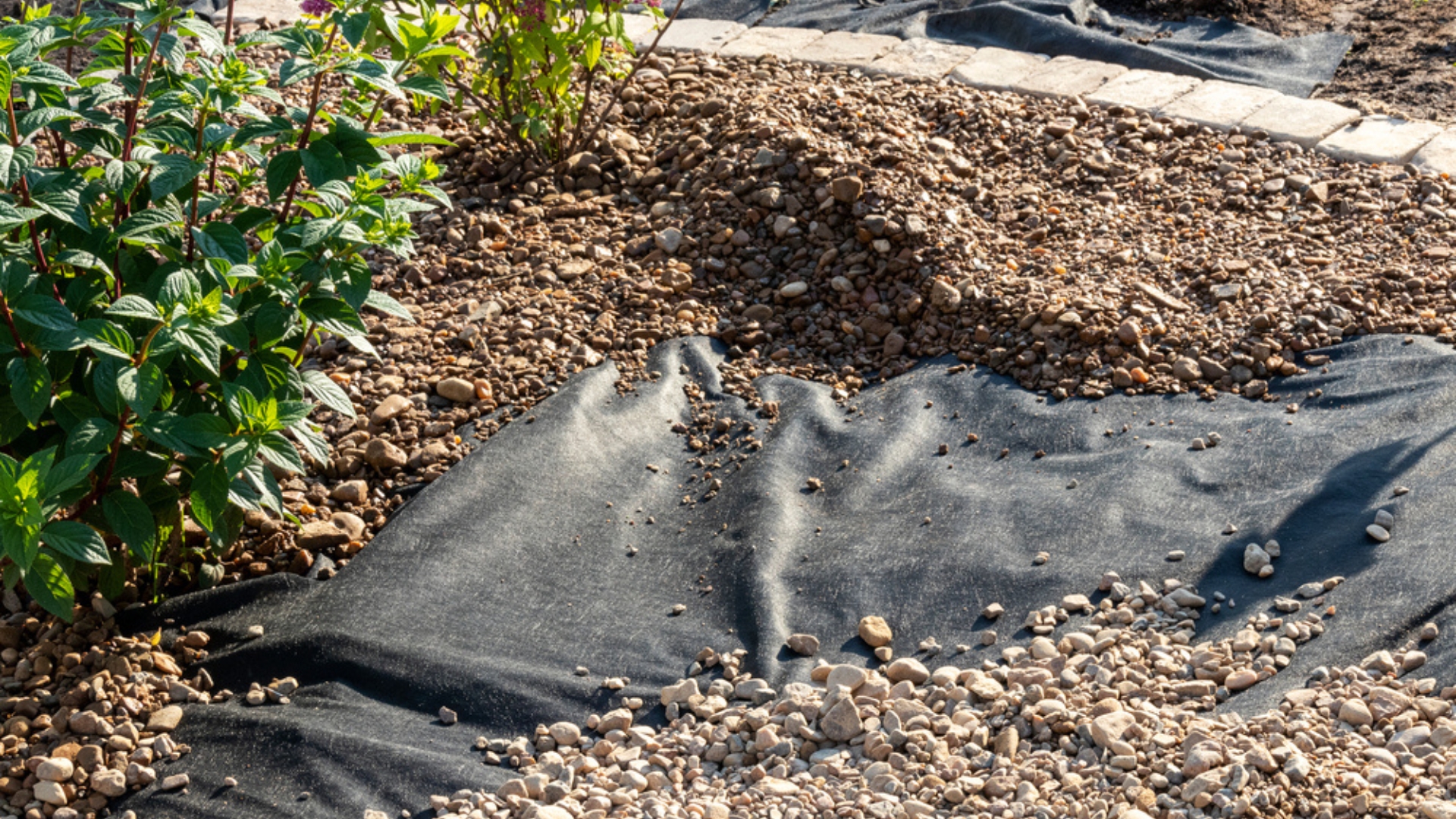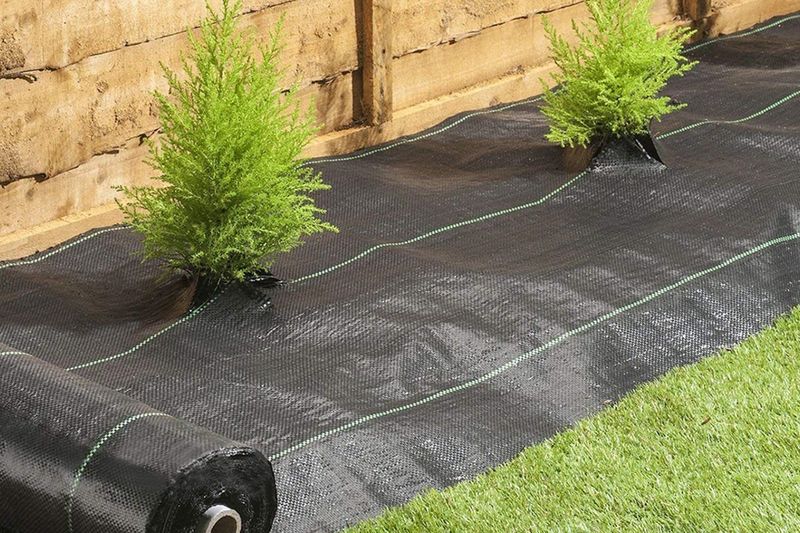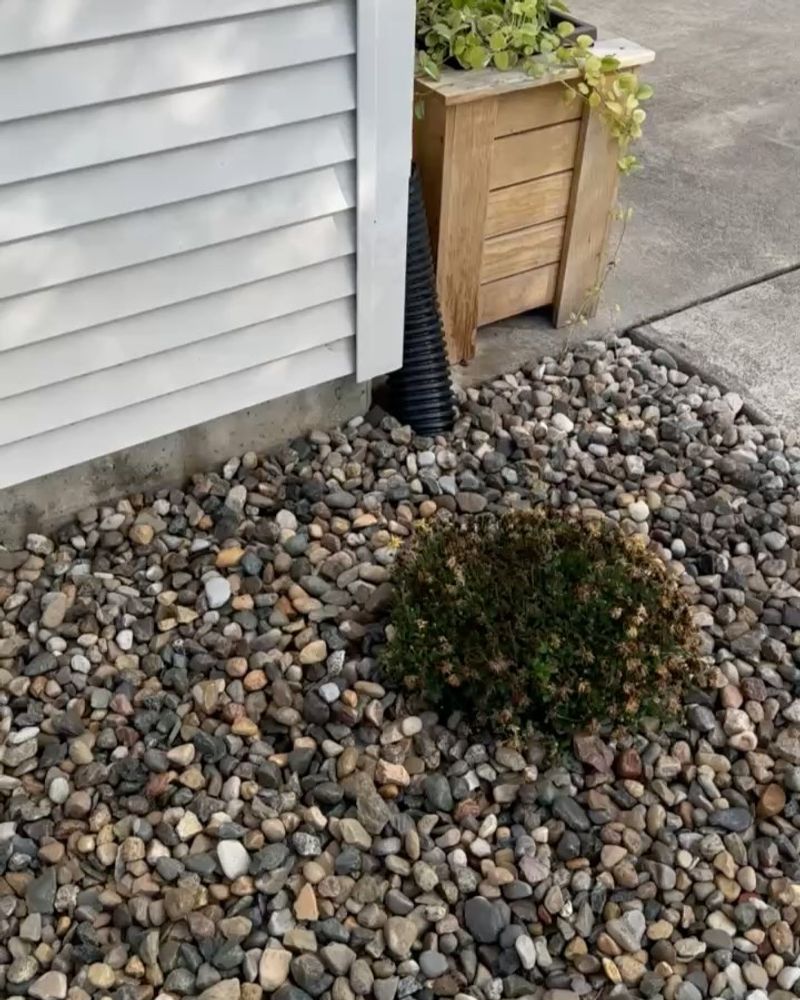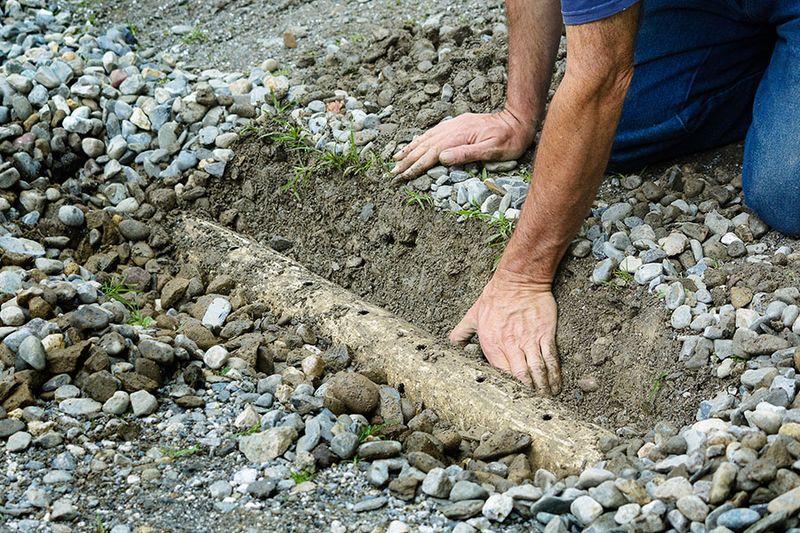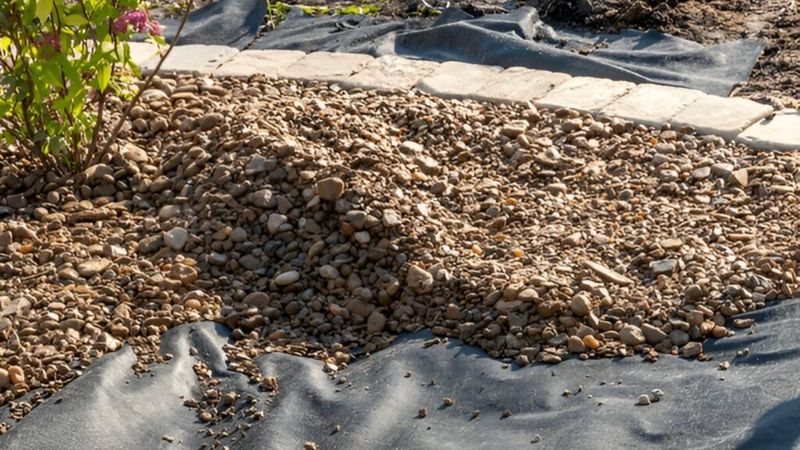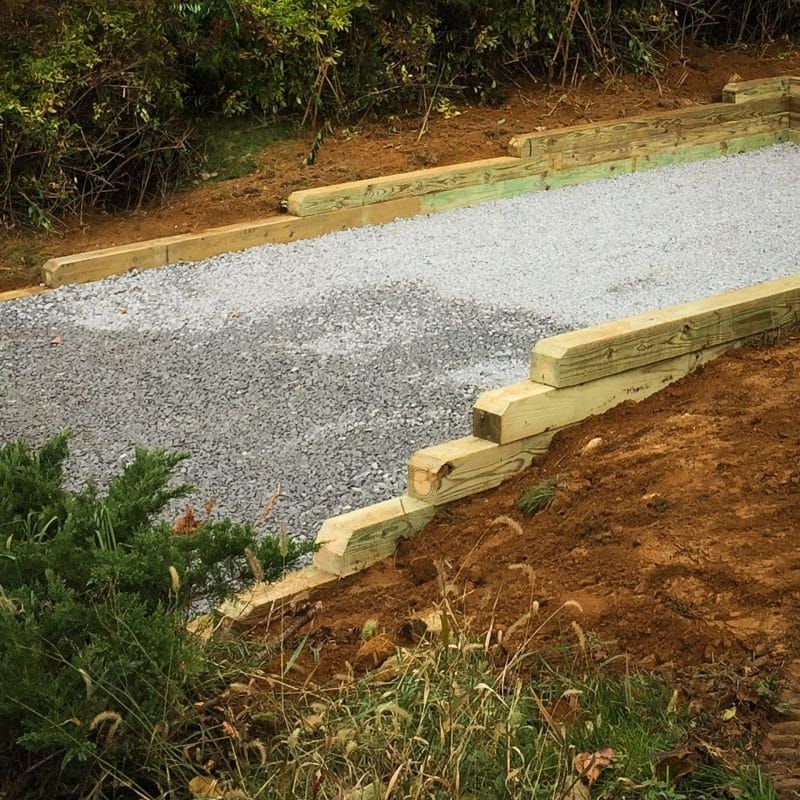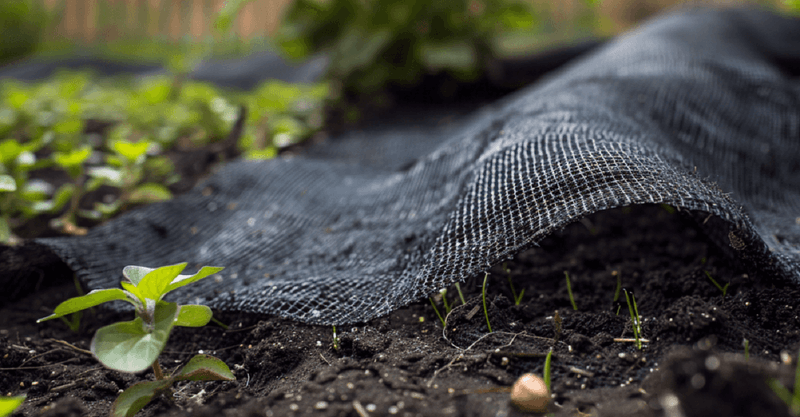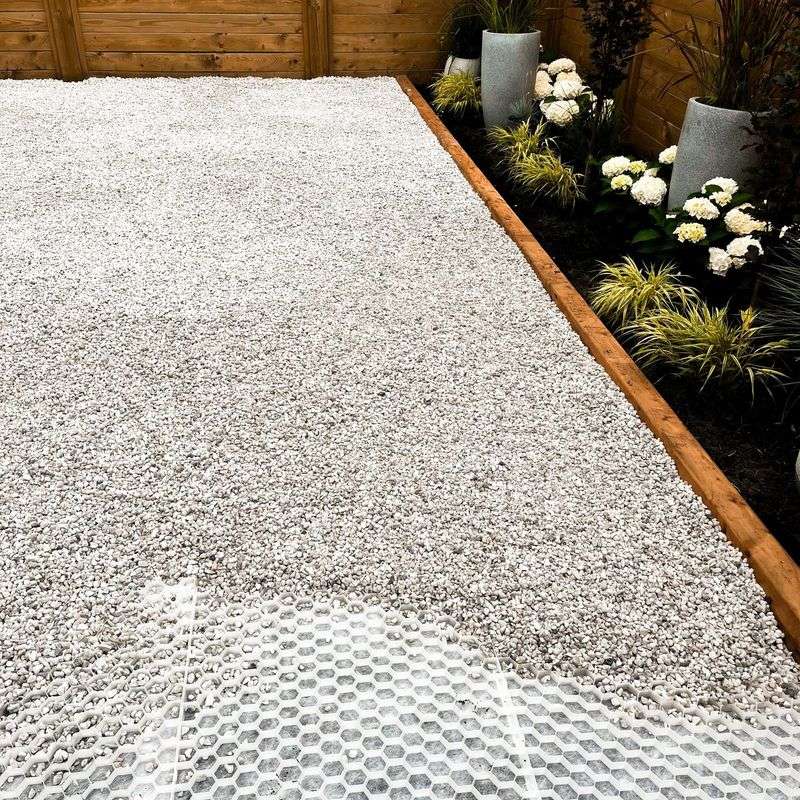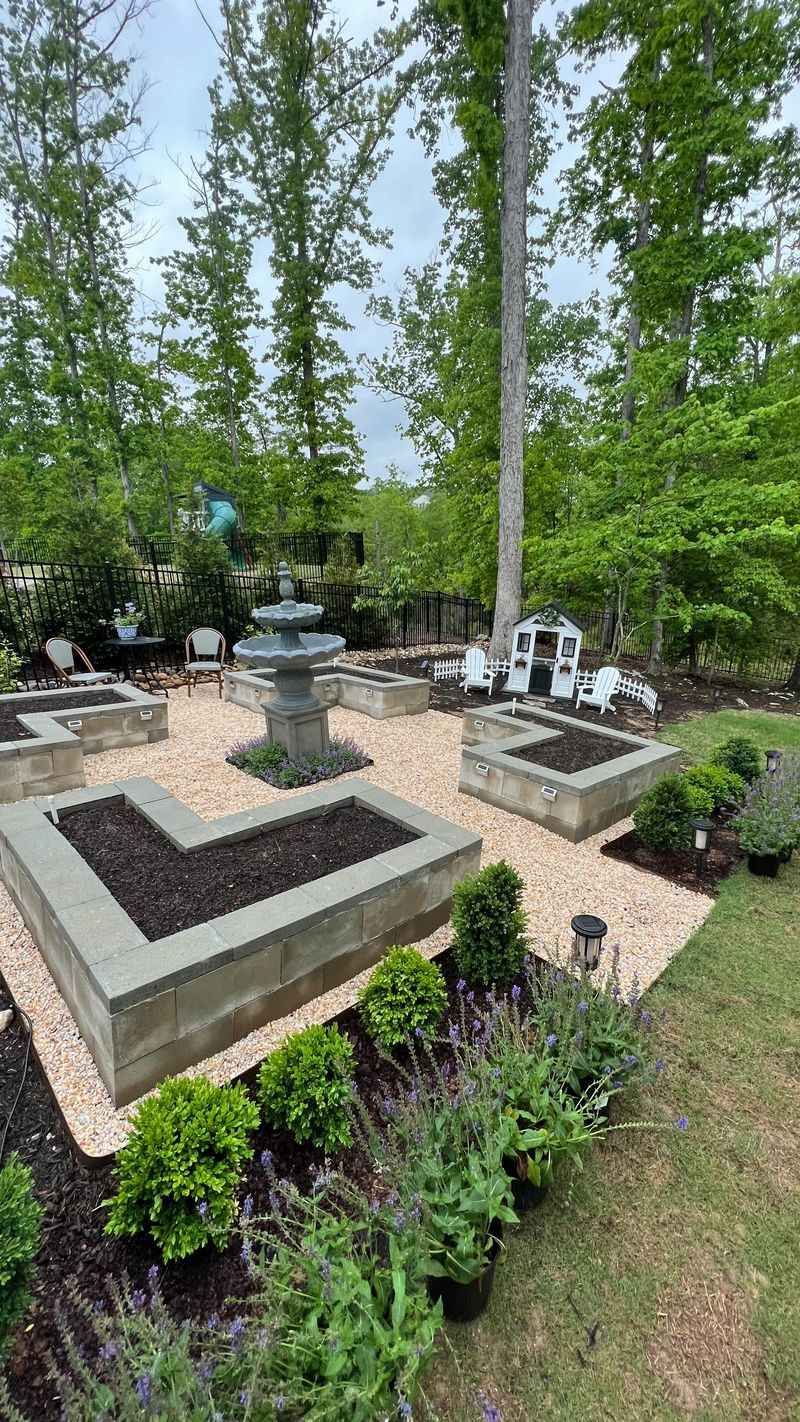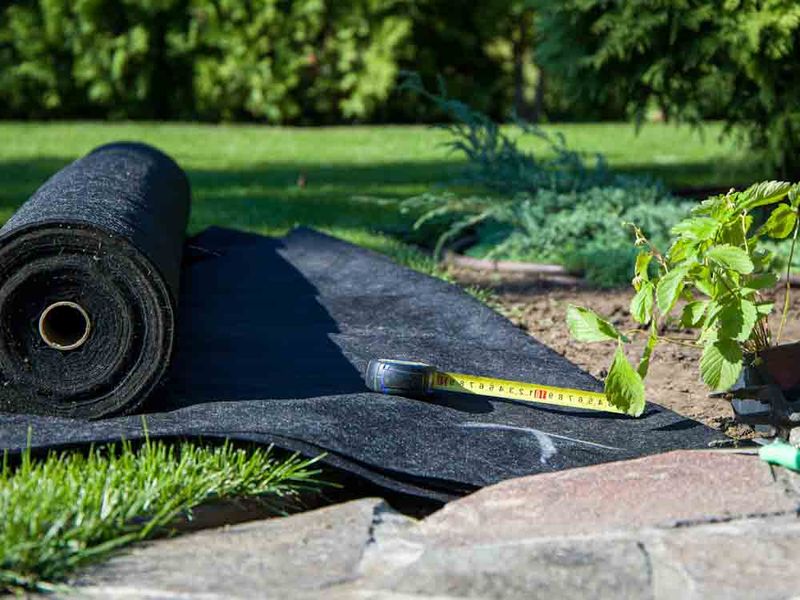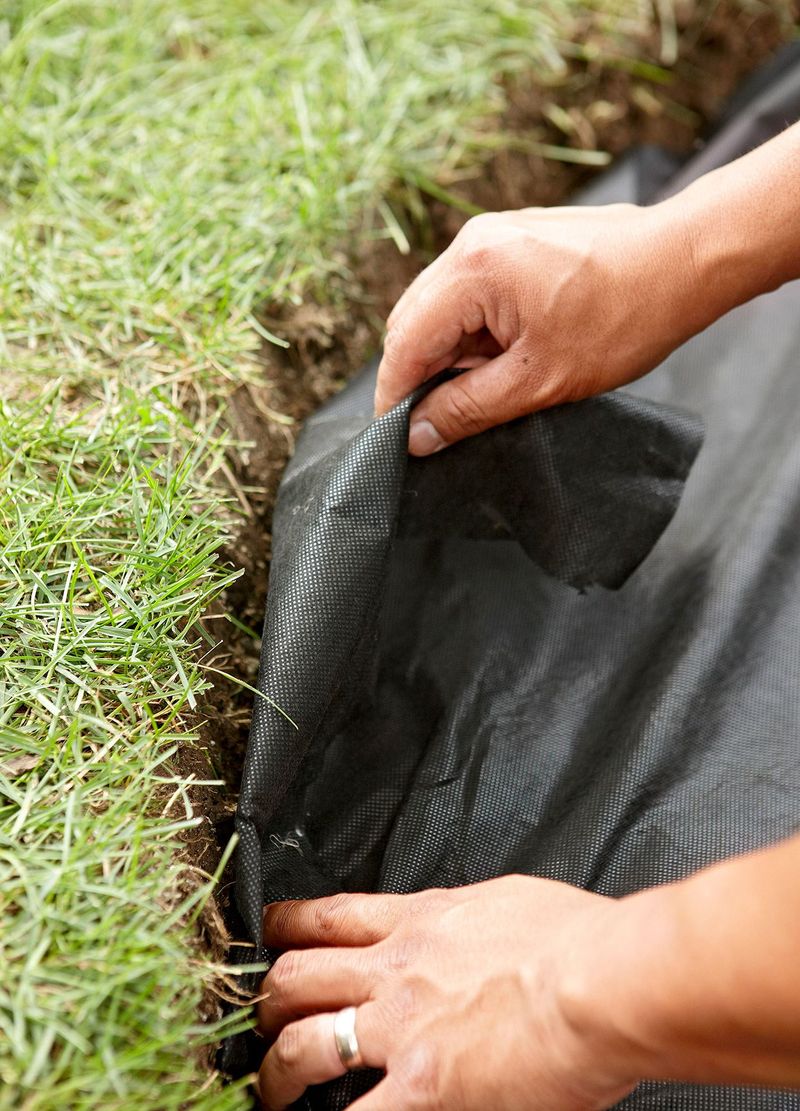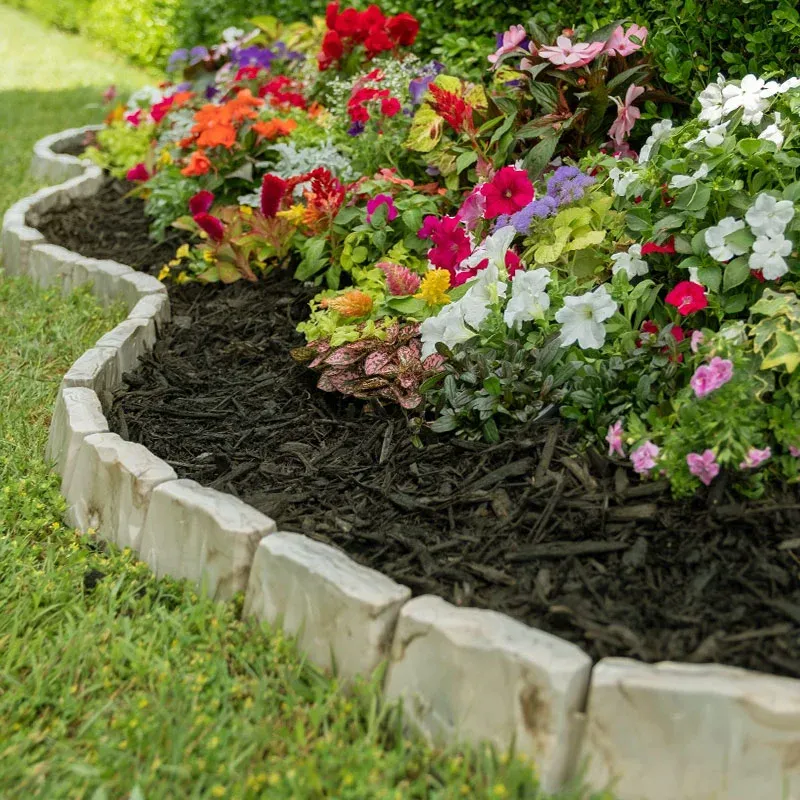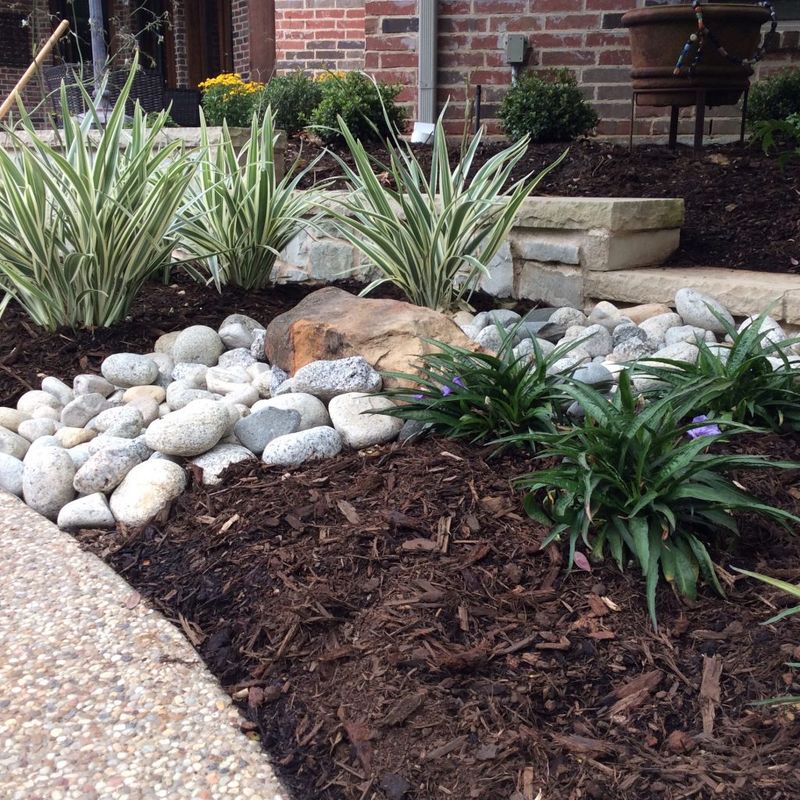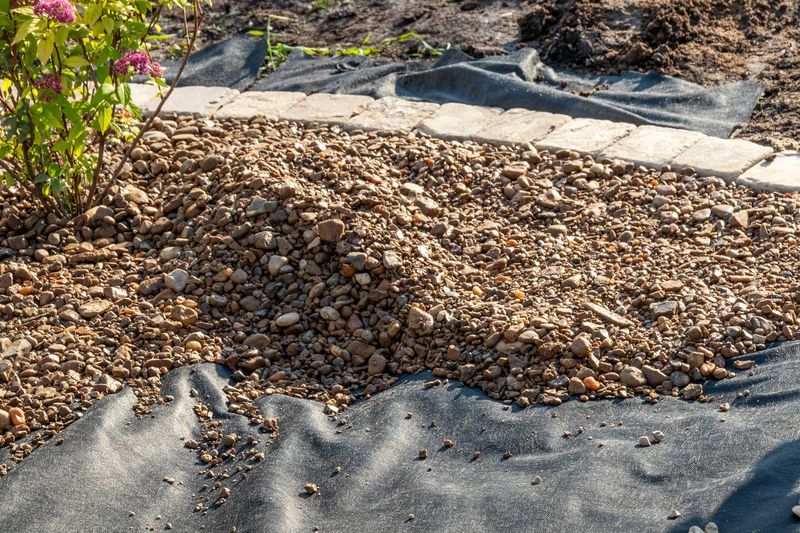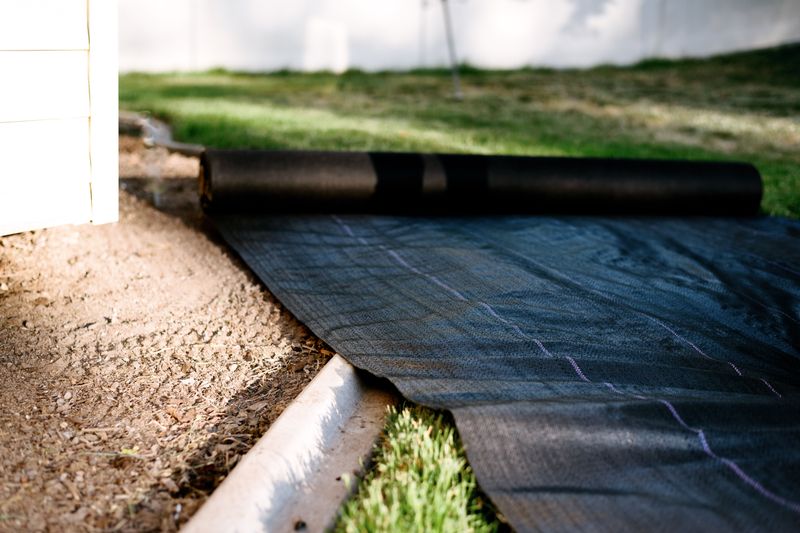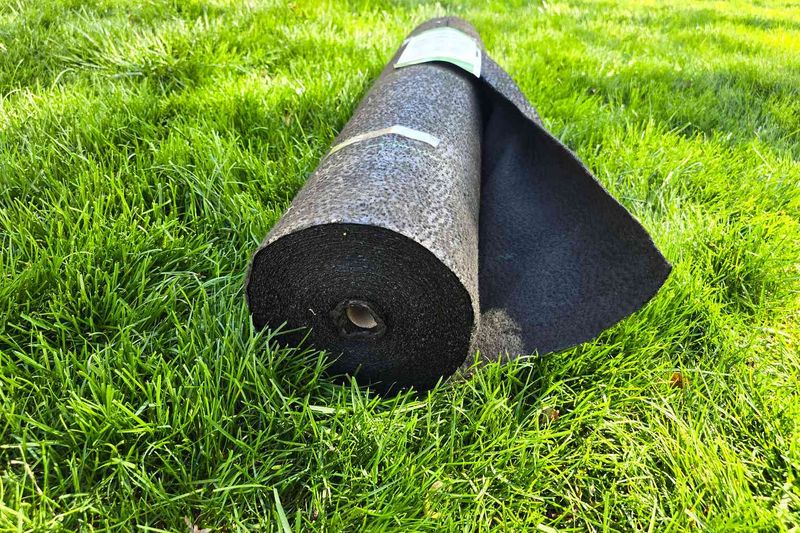When creating a gravel pathway or driveway, what you put underneath matters just as much as the stones on top. Landscape fabric has been the go-to barrier for landscapers for decades, despite newer alternatives entering the market. There’s good reason why this trusty material continues to outperform other options when it comes to creating long-lasting, low-maintenance gravel installations.
1. Long-Term Weed Suppression
Landscape fabric creates a physical barrier that stops most weeds from reaching sunlight. Unlike cardboard or newspaper that decompose within months, quality landscape fabric can block persistent weeds for 5-10 years with minimal breakthrough.
Many alternatives simply can’t match this longevity. Plastic sheeting traps moisture and eventually cracks, while organic materials like mulch alone require constant replenishment as they break down, allowing weeds to establish quickly.
2. Prevents Gravel From Sinking Into Soil
Ever notice how gravel installations without proper barriers gradually disappear into the ground? The fabric creates a distinct separation layer that keeps your expensive decorative stone visible where it belongs.
Sand and crushed stone alternatives often mix with the soil below during freeze-thaw cycles. Heavy rain can accelerate this process dramatically, washing away your investment. Professional-grade landscape fabric maintains that crucial boundary year after year.
3. Improves Drainage Without Erosion
Water management is crucial for any outdoor surface. The tiny perforations in landscape fabric allow water to pass through while keeping soil particles in place. This prevents puddles on top while minimizing erosion underneath.
Alternatives like plastic sheeting create water dams that lead to flooding and unstable surfaces. Even coarse sand layers can wash away over time. The balance achieved by landscape fabric’s semi-permeable design simply works better in real-world conditions.
4. Reduces Maintenance Over Time
Nobody enjoys spending weekends pulling weeds or replacing displaced gravel. With proper landscape fabric installation, maintenance requirements drop dramatically compared to other methods.
Homeowners report spending 70% less time on gravel area upkeep when quality fabric is used underneath. The initial effort pays dividends for years. Alternatives like cardboard barriers or bark mulch bases require constant attention and regular replacement, consuming both time and money.
5. Creates a Stable Base for Gravel Installations
Gravel shifts and moves unless it has something to grip onto. The slightly textured surface of landscape fabric provides that perfect anchor, keeping your stones more evenly distributed.
Walking or driving on gravel without this stabilizing layer creates ruts and depressions quickly. Natural soil bases allow gravel to sink unevenly, while plastic alternatives become slippery surfaces that cause gravel migration. The fabric’s texture strikes the ideal balance between stability and drainage.
6. Saves Money in the Long Run
Premium landscape fabric might seem expensive initially, but the math favors this investment overwhelmingly. Calculate the cost of repeatedly buying weed killer, replacement gravel, and labor over several years without fabric.
Homeowners typically recover their fabric investment within two seasons through reduced maintenance costs. Cheaper alternatives lead to hidden expenses from increased weed control products, more frequent gravel replacement, and potential drainage problems requiring professional fixes.
7. Easy to Install for Most DIYers
You don’t need professional skills to install landscape fabric correctly. The material cuts easily with household scissors and lays flat without special equipment. Most weekend warriors can handle this project confidently.
Compared to precision-graded crushed stone bases or complex drainage systems, landscape fabric is remarkably forgiving. Simply overlap the seams, secure with fabric pins, and add your gravel. Even first-time landscapers report successful installations when following basic guidelines.
8. Environmentally Safe Options Available
Modern landscape fabrics include eco-friendly versions made from recycled materials or natural fibers. These options break down slowly and safely while still providing years of effective service.
Plastic sheet alternatives leave microplastics in soil for centuries. Chemical weed barriers introduce unnecessary toxins. The latest generation of permeable landscape fabrics strikes a reasonable balance between performance and environmental responsibility, making them suitable for eco-conscious homeowners.
9. Minimizes Mud and Soil Contamination in Gravel
Clean gravel stays attractive longer. Landscape fabric creates that essential barrier that prevents soil from migrating upward and mixing with your decorative stone during wet conditions.
After heavy rains, gravel installations without fabric often develop muddy patches where soil has worked its way up. This not only looks unsightly but creates slippery hazards. The fabric’s filtering action keeps your gravel layer pristine, maintaining both appearance and functionality regardless of weather.
10. Prevents Insect and Rodent Havens
Gravel areas can become unexpected wildlife habitats without proper barriers. Landscape fabric creates an inhospitable environment for many burrowing insects and rodents that might otherwise make homes under your gravel.
Organic alternatives like straw or mulch actually attract critters looking for nesting materials. Plastic sheets create air pockets perfect for ant colonies. The dense weave of quality landscape fabric eliminates these hidden spaces while still allowing necessary water movement, discouraging unwanted residents.
11. Works Well With Edging Systems
Professional-looking gravel installations need proper containment. Landscape fabric pairs perfectly with all types of edging materials, from metal and plastic to stone and concrete.
The fabric can be trimmed precisely or wrapped up along edges for complete weed blockage. Many alternatives create compatibility problems – plastic sheets can’t be secured properly to edging, while sand or crushed stone bases wash out around edges during rain. Fabric maintains that critical barrier right to the boundary of your installation.
12. Compatible With Mulch or Decorative Layers
Versatility makes landscape fabric the professional’s choice. Unlike many alternatives, quality fabric works equally well under organic mulch, decorative gravel, or larger river rocks.
The material adapts to different landscape designs without changing your installation method. Rubber mats and plastic sheets can react poorly with certain materials or create drainage issues with heavier decorative elements. Landscape fabric maintains consistent performance regardless of what you place on top.
13. Tested and Trusted in Commercial Landscaping
Professional landscapers stake their reputation on results. They overwhelmingly choose landscape fabric for commercial projects where failure isn’t an option. This real-world validation speaks volumes about its effectiveness.
Major public spaces, hotel grounds, and corporate campuses rely on landscape fabric under their gravel installations. These high-traffic, high-visibility areas demand solutions that remain effective for years with minimal maintenance. The professionals’ continued preference for fabric over newer alternatives confirms its superior performance.
14. Reduces Chemical Herbicide Need
Family safety matters in your outdoor spaces. Landscape fabric creates a physical weed barrier rather than relying on potentially harmful chemicals to keep gravel areas weed-free.
Households with children and pets particularly benefit from this reduced chemical dependency. While no solution eliminates herbicide use completely, fabric significantly reduces the frequency and quantity needed. Many alternatives eventually require aggressive chemical treatments as weeds inevitably break through.
15. Proven Results Across Climates and Conditions
From Arizona desert heat to Minnesota freeze-thaw cycles, landscape fabric performs consistently across extreme conditions. This adaptability makes it suitable for virtually any location or climate zone.
Many alternatives work well only in specific environments. Sand bases wash away in heavy rain regions. Plastic barriers crack in extreme temperatures. Natural materials decompose rapidly in humid areas. Landscape fabric’s climate versatility explains why it remains the default choice for professionals across the country.

